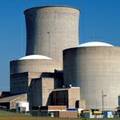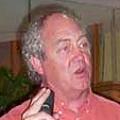 在綠色和平組織創辦者之一摩爾(Patrick Moore)、美國前環境保護署署長惠特曼(Christine Todd Whitman)帶頭下,核能業者24日發動新一波促銷核電的公關活動。核能發電的擁護者希望摩爾與惠特曼把核能的好處推廣給美國大眾,並幫助點燃核能產業復甦的火花──美國近30年來沒有蓋過一座核電廠。
在綠色和平組織創辦者之一摩爾(Patrick Moore)、美國前環境保護署署長惠特曼(Christine Todd Whitman)帶頭下,核能業者24日發動新一波促銷核電的公關活動。核能發電的擁護者希望摩爾與惠特曼把核能的好處推廣給美國大眾,並幫助點燃核能產業復甦的火花──美國近30年來沒有蓋過一座核電廠。
摩爾表示:「科學證實顯示,核電對環境而言是安全而可靠的能源選擇。」摩爾與惠特曼目前共同擔任「乾淨安全能源聯盟」(CASEnergy) 主席。這個由美國核能協會(NEI)所支持的聯盟,包括50個以上特約會員組織,是代表美國103個商業運轉核子反應爐(發電量佔全美20%)出資老闆與作業人員的團體。
摩爾曾經是綠色和平組織第一艘抗議船上的船員。該船1971年9月從加拿大溫哥華出發,駛向美國位於阿拉斯加阿姆奇特島(Amchitka Island)上的核子武器試爆區,宣示反核子武器的立場。摩爾是1977到1986期間加拿大綠色和平組織的主席,同時在這幾年當了國際綠色和平組織七屆執行長。
在24日的記者會上,他表示1986年離開綠色和平組織是因為它變得太過極端,他感覺綠色和平似乎「變得比較感情用事而非實事求是。」記者會上,摩爾為自己受雇於核能業者的角色辯護,但究竟收多少錢做什麼事的相關細節,他並不願多談。
摩爾認為,美國唯一實際的解決之道就是從石化業轉向再生能源與核能;但他說,環保團體提倡的再生能源,尚未成熟到足以促動這個趨勢。
美國綠色和平組織核電分析員里喬(Jim Riccio)表示:「摩爾的名聲是靠過去在綠色和平的經歷,但現在他的話未必可信。」里喬向ENS表示︰訴求乾淨又安全的核能電力,「真是虛偽到極點,尤其是在紀念車諾比事件期間。」
綠色和平24日所發表的報告指出,核子工業自1986年以來,有200次「差點」造成核子反應爐爐心熔毀的紀錄。里喬認為,這份研究顯示核能電廠是「十足的危險」,將核能電力包裝成全球變遷的解決方案是「致命的錯誤」。
 The nuclear industry launched a new campaign on Monday to generate support for increased nuclear power, spearheaded by Greenpeace cofounder Patrick Moore and former U.S. Environmental Protection Agency Administrator Christine Todd Whitman. Nuclear power advocates are hoping that Moore and Whitman can sell the American public on the benefits of nuclear power and help spark the resurgence of an industry that has not constructed a new plant in some 30 years.
The nuclear industry launched a new campaign on Monday to generate support for increased nuclear power, spearheaded by Greenpeace cofounder Patrick Moore and former U.S. Environmental Protection Agency Administrator Christine Todd Whitman. Nuclear power advocates are hoping that Moore and Whitman can sell the American public on the benefits of nuclear power and help spark the resurgence of an industry that has not constructed a new plant in some 30 years.
"Scientific evidence shows that nuclear power is an environmentally sound and safe energy choice," said Moore, who along with Whitman will cochair the Clean and Safe Energy Coalition (CASEnergy). The coalition, which is funded by the Nuclear Energy Institute (NEI), includes more than 50 charter member organizations. NEI represents the owners and operators of the nation's 103 commercial nuclear reactors– these facilities currently produce 20 percent of U.S. electricity.
Moore was a crewmember on the first Greenpeace protest vessel. It sailed from Vancouver, British Columbia in September 1971 to the U.S. nuclear weapons test zone on Amchitka Island, Alaska to demonstrate opposition to nuclear weapons. He was president of Greenpeace Canada between 1977 and 1986 and a director of Greenpeace International for seven of those years.
He told reporters today that he left Greenpeace in 1986 because it had become too extremist and "developed a tendency to use sensation instead of information." At the news conference today, Moore defended his paid role with the nuclear industry-funded coalition, but declined to detail how much he is being paid for his services.
The only realistic solution for the United States to shift away from fossil fuels is a combination of renewable energy and nuclear power, Moore said, and the renewable energy sources touted by many environmental groups are not ready to drive that change.
Jim Riccio, a nuclear power analyst with Greenpeace USA, said Moore has been “living off his reputation with Greenpeace for some time now and lacks credibility." To call nuclear power clean and safe is “the height of hypocrisy, especially as we are ready to commemorate Chernobyl,” Riccio told ENS.
A report released Monday by Greenpeace finds that the industry has had some 200 "near misses" to nuclear meltdowns since 1986. The study shows that nuclear power plants are a "clear and present danger," Riccio said, and packaging nuclear power as a solution to global warming is "dead wrong."





